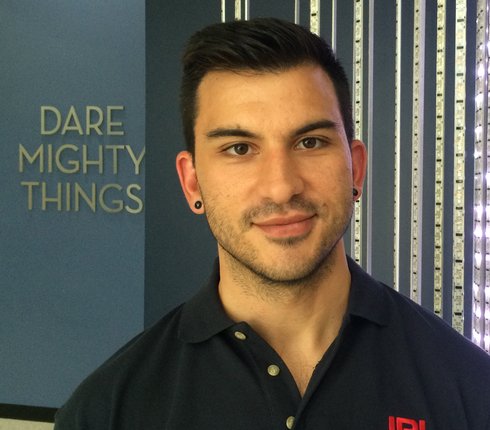
Lina Khosrovian is a first-year teacher at Stonehurst Magnet Elementary, a STEAM magnet school in Los Angeles County. She teaches third-grade students subjects including language arts, math, science and social studies. Ms. Khosrovian recently reached out about how she added her own creative spin to the JPL lesson Art and the Cosmic Connection to have it reflect her multidisciplinary classroom.
What inspires you to teach?
I am in my first year of teaching, and I could not be more driven and excited to teach my students about all the wonders of life. I am a learner myself, and I strive to discover new and moving ways to instill knowledge upon my students.
I consider myself extremely lucky to be teaching at Stonehurst, where we have a passion for teaching STEAM to our students. I especially appreciate the students’ enthusiasm for learning science.
What challenges do you face engaging or addressing the needs of your students?
I have found that the key to effectively and successfully teaching students is to teach what they admire, are curious or fascinated about or have an appreciation for. I always ask my students about their interests and what they would like to learn. This inspires my lessons and tends to each students’ individual interest in learning.
How did you incorporate a JPL Education lesson into your classroom?
Brandon Rodriguez, an educator professional development specialist at NASA’s Jet Propulsion Laboratory, visited our school and presented a lesson called Art and the Cosmic Connection.
After showing us images of planets, Mr. Rodriguez handed out paper, chalk, crayons and markers, and instructed us to draw our own imaginary planet. Listening to his awe-inspiring lecture, I began to think about the beautiful garden at our school and wondered how I could incorporate it into a similar activity with my students. I decided that I would have my students create their own planet inspired by the school garden.
First, my students and I began to learn about different planets together, discussing the possible history of each unique world. We conversed and wrote about our theories. Then each student drew and wrote about their own, imaginary planet. Some students drew icy planets and said that the ice had melted when the planet was close to the Sun. Other students explained that the uniqueness of their planet was due to the presence of life and water.
With our knowledge, ideas and imagination, we grabbed paper bags to collect soil, sticks, hay, leaves, rocks and other natural items from the garden. Back in the classroom, each student began to construct 3-D versions of their drawings with the materials they collected. Their work was beautifully presented, with soil representing land, leaves representing life, blue paint representing water, and mixtures representing unknown and unique creations – plus some silver paint to make it all more “cosmic.”
How did it help you meet your objectives? How did students react to the lesson?
This lesson allowed my students to engage with the world around them and understand that planets have a uniqueness and a history that is quite remarkable. The lesson gave students a chance to discover more about their own planet and express their connection to it.
I sincerely value the JPL Education lessons, activities and resources, as they are quite beneficial to teachers. Each activity and lesson provides the opportunity for students to learn and wonder. And when you’re inspired to wonder, the possibilities are endless – and so is the fun!
Looking for ways to bring NASA STEM into your classroom or already have a great idea? The Education Office at NASA's Jet Propulsion Laboratory serves educators in the greater Los Angeles area. Contact us at education@jpl.nasa.gov.

